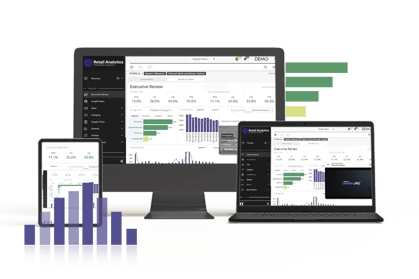To be on the right side of Walmart history, brands have to embrace retail data and analytics. The handwriting is on the wall, as we’ve already described in earlier sections of this guide.
The path to data and analytics excellence isn’t always obstacle-free.
Like a good Spaghetti Western, Walmart suppliers sometimes associate certain benefits (the good), pain points (the bad), and reservations (the ugly) with adopting and optimizing a best-in-class retail analytics system.
As you’ll see, “the good” should convince brands to push through the bad and the ugly. But, first, the bad and the ugly.
Common Pain Points & Reservations to Building a First-Rate Analytics Program
Brands sold through Walmart are sometimes slow or hesitant to pursue analytics with gusto, or to make additional investments that would elevate the program to a category-leading level.
Here are some of the most common pain points and reservations among Walmart vendors:
The Status Quo
Aka change aversion, aka comfortable routines, aka Excel or die. Hey, change is hard – particularly within organizations, where routines, turnover, politics, risk, and so many other factors make inertia the order of the day.
Look, the vast majority of Walmart suppliers realize they need a more advanced retail analytics solution, but the low-risk, low-investment, high-comfort “old way of doing things” can be tenacious in its hold on brands.
In the world of retail analytics, this change-aversion manifests most visibly in these three ways:
- Manual processes – The brand realizes manual processes are time-consuming in the long-run, but the perceived, short-run difficulty and investment of adopting automated tools keeps them running pivot tables much longer than they should.
- Excel-till-we-yell – Speaking of pivot tables, Excel – and perhaps the professional pride of being an “Excel expert” – can prevent a brand from actively seeking out better, more automated retail analytics tools.
- Training – “We just don’t have time,” some brands will reason, “to learn a new set of terms, processes, and reports right now.” Never mind that learning resources and customer support are essential parts of a good retail analytics tool – one that should be make-or-break when shopping for analytics providers.
Technophobia
Related but worthy of its own mention: For many of us, technology is a bit scary. For some reason (and incorrectly), we have flashbacks to Mr. Brubaker’s third-period Algebra class. Data and analytics both live somewhere in the left side of our brain, and we question our ability to “get it.”
None of us likes to feel inferior; none of us wants to feel like an imposter.
And retail analytics technology can provoke such fears.
Since retail analytics tools today are often easier to use than Excel and old-guard analytics systems, the fears are generally unfounded.
Out of Sight, Out of Mind
Frankly, the typical brand is bogged down with day-to-day emergencies. “If we can just survive this week…”
And just as we put-off personal goals to eat better, save money, and read more, brands often put-off improving their retail analytics programs for those day-in, day-out panics.
Which is a shame, because many of those panics could be avoided in the first place – with a more advanced retail analytics system.
Data-Burn
“Fool me once, shame on you. Fool me twice, shame on me.” Some brands have that attitude toward analytics and data-driven decisions in general.
They’ve been burned by data providers, data tools, data decisions – or all three.
Data-and-analytics is most definitely a GIGO proposition – Garbage In, Garbage Out. And in retail analytics, you just can’t put lipstick on a pig.
Burned once, some Walmart suppliers will let a previous experience with a “pig” prevent them from ever going big on retail analytics again. At the expense of growing sales, unfortunately.
NIMBY
“Not in my backyard” may be a common objection associated more often with community politics than analytics, but, the truth is, organizational members often treat their jobs as tiny fiefdoms.
“I don’t need that [insert name of retail analytics tool] here,” the team member thinks. “It’s fine for others, but it can’t do what I need it to do.” It can’t, for instance:
• Quickly and easily incorporate the datasets I need
• Generate the reports I need
• Merge with the applications I need
In other words, it can’t “do exactly what I need it to do.”
Increasingly, a good retail analytics tool – can do exactly that… and more. If it can’t, keep shopping.
Nuqleous Retail Analytics software can help Walmart suppliers overcome challenges of limited knowledge and access, lack of action, reliance on manual processes, unanswered questions, combating fees, and data overload. By utilizing a solution like Retail Analytics, suppliers can efficiently analyze business performance, take action and become top-tier suppliers.
Interested? Ready to explore the possibilities? Let's talk.
.webp)




